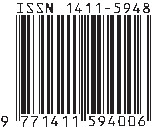KRITIK SOSIAL DALAM SERIAL TELEVISI RUSIA ЛУЧШЕ, ЧЕМ ЛЮДИ (LEBIH BAIK DARIPADA MANUSIA) KARYA ANDREY JUNKOVSKY
Abstract
This study aims to analyze social criticism in the Russian television series Лучше, Чем Люди (Better than Us) by Andrey Junkovsky. With a dystophia theme, this study focusing on criticism of human dependence on robotic technology. The data used in this study is a cut scene which is then analyzed by a descriptive analytical method with a semiotic theory by Roland Barthes. The research was conducted by looking at the meaning of denotations and connotations in the Russian television series Лучше, Чем Люди. This study argues that there are 11 scenes that depict human dependence on robotic technology. This is the social criticism in series Лучше, Чем Люди by Andrey Junkovsky.
References
Barthes, R. 2004. Mitologi Roland Barthes. Yogyakarta: Kreasi Wacana.
Fedorov, A. 2018. Российское кино: очень краткая история (1898 - 2018).
Gavrilyuk, A., & Lebedeva, V. 2021. Netflix пошел королевой. Diakses dari https://www.kommersant.ru/doc/4732292, diakses 17 Maret 2022.
Ghaisani, F. A. 2020. “Representasi Kritik Sosial dalam Film Indonesia (Analisis Semiotika Kritik Sosial dalam Film Slank Nggak Ada Matinya”. Disertasi. Surabaya: Universitas Airlangga.
Gordin, M.D., Tilley, H., & Prakash, G. (Eds.). 2010. Utopia/Dystopia: Conditions of Historical Possibility. Princeton University Press.
Hoed, B.H. 2014. Semiotik dan Dinamika Sosial Budaya. Depok: Komunitas Bambu.
Korolev, I. 2022. Netflix покинул Россию. https://www.cnews.ru/news/top/2022-03-09_netflix_pokinul_rossiyu, diakses 17 Maret 2022.
Kozlov, V. 2019. ‘Better Than People’ to Become First Russian Series Under “Netflix Originals” Banner. https://www.hollywoodreporter.com/tv/tv-news/netflix-picks-up-first-original-russian-tv-series-1175523/, diakses 16 Maret 2022.
Mudjiono, Y. 2020. “Kajian Semiotika dalam film.” Jurnal Ilmu Komunikasi, 1(1):125—138.
Pawito. 2015. “Komunikasi Politik: Media Massa dan Kampanye Pemilihan.”
Prasetya, A.B. 2019. Analisis Semiotika Film dan Komunikasi. Malang: Intrans Publishing.
Privyetstudent.com. 2013. “Киноиндустрия в России: основные этапы и история развития”. https://privetstudent.com/kursovyye/geografiia-kursovye/1467-kinoindustriya-v-rossii-osnovnye-etapy-i-istoriya-razvitiya.html, diakses 20 Maret 2022.
Salim, V., & Sukendro, G.G. 2021. “Representasi Kritik Sosial dalam Film Parasite (Analisis Semiotika Roland Barthes). Koneksi, 5(2):381—386.
Setyorini, L. 2015. “Hilangnya Kebebasan Manusia Akibat Teknologi: Kritik Sosial dalam Anime Psycho Pass.”
Sinelschikova, Y. 2019. “Why watch Netflix’s Better Than Us, a Russian TV show about cyborgs”. https://www.rbth.com/arts/330878-why-watch-russian-show, diakses 16 Maret 2022.
Sobur, A. 2017. Semiotika Komunikasi. Remaja Rosdakarya.
Tatishevo.saratov.gov.ru. 2016. “История кино в России”. http://www.tatishevo.saratov.gov.ru/index.php?option=com_k2&view=item&id=16464 :история-кино-в-россии&Itemid=129, diakses 20 Maret 2022.
Tsivian, Y., & Taylor, R. 2013. Early cinema in Russia and its cultural reception. Routledge. Yogyakarta: Jalasutra.

This work is licensed under a Creative Commons Attribution-ShareAlike 4.0 International License.
SEMIOTIKA has CC-BY-SA or an equivalent license as the optimal license for the publication, distribution, use, and reuse of scholarly work. Authors who publish with this journal retain copyright and grant the journal right of first publication with the work simultaneously licensed under a Creative Commons Attribution-ShareAlike 4.0 International License that allows others to share the work with an acknowledgment of the work's authorship and initial publication in this journal.
Attribution-ShareAlike
CC BY-SA










